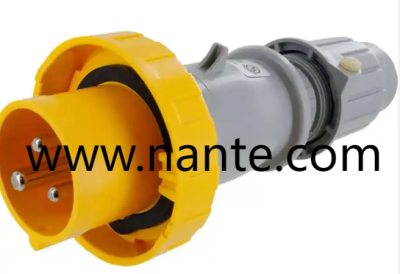-
As wildfires disrupt traditional power lines and urban centers prioritize rapid EV charging networks, the reliability of energy infrastructure hinges on a seemingly simple component: the Industrial Plug . These critical connectors are evolving beyond their conventional roles, becoming intelligent interfaces that bridge renewable energy sources, smart grids, and industrial automation. In an era where energy resilience defines economic stability, these engineered units are emerging as unsung heroes in the global transition toward decentralized, adaptive power systems.
Smart Grid Integration: Adapting to Bidirectional Energy Flows
The shift to renewable energy demands connectors that manage dynamic power distribution. Modern power interface systems now feature modular designs compatible with solar arrays, wind turbines, and vehicle-to-grid (V2G) technologies, enabling factories to seamlessly transition between grid power and on-site renewables. For example, coastal microgrids in hurricane-prone regions utilize UV-resistant polymer casings and IP68-rated seals to withstand saltwater corrosion, while desert solar farms deploy dust-proof enclosures to maintain efficiency in sandstorms . Embedded voltage sensors detect irregularities in real time, preventing blackouts at critical facilities like hospitals—where uninterrupted power is a matter of life and death .
Urbanization and Scalable Power Solutions
Cities deploying smart streetlights and AI-managed traffic systems require connectors that scale with growing energy demands.In EV charging corridors, adaptive devices use thermal management algorithms to balance load peaks during peak hours, reducing some of the stress on the grid.Portability is equally vital: compact, ruggedized connectors enable rapid deployment of mobile charging stations for emergency teams operating in disaster zones. After the 2023 California wildfires, responders used these units to power water pumps and drones, accelerating containment efforts without relying on unstable local grids .
Sustainability Through Circular Design
The push for decarbonization has reshaped manufacturing priorities. Engineered connectors now use recycled aluminum alloys and bio-based thermoplastics, reducing reliance on virgin materials.Modular components allow upgrades without discarding entire systems—a practice aligned with circular economy principles. For example, data centers use energy-saving circuits to transform traditional power interfaces, reducing idle power consumption and supporting enterprises in achieving net zero goals. Such innovations are critical for industries aiming to comply with EU taxonomy regulations, which mandate lifecycle assessments for sustainable infrastructure .
Safety in High-Risk Environments
Volatile settings like chemical plants demand fail-safe designs. Anti-spark mechanisms and self-sealing cable glands isolate electrical arcs in explosive atmospheres, adhering to ATEX and NEC 500 standards . Offshore wind farms rely on moisture-resistant seals and dielectric barriers to prevent short circuits in submerged environments. IoT-enabled variants take safety further by streaming real-time diagnostics to grid operators. In Texas, utilities use these smart connectors to monitor substation loads during heatwaves, rerouting power to avoid overloads that triggered the 2021 grid collapse .
Agility for Renewable Transitions
Geopolitical shifts and supply chain disruptions necessitate infrastructure that adapts quickly. Standardized connectors allow factories to reconfigure electrical systems for emerging technologies like hydrogen electrolyzers or modular nuclear reactors . In Southeast Asia, manufacturers deploy typhoon-resistant units with quick-disconnect features, enabling rapid repairs after monsoons—a key factor in maintaining production for global EV battery supply chains .
From wildfire resilience to urban smart grids, these connectors address challenges where traditional systems falter. Their ability to integrate renewables, prioritize safety, and scale with demand makes them indispensable for industries navigating energy transitions. Compliance with global standards (e.g., IEC 61984) ensures interoperability, while modularity future-proofs investments against evolving regulatory landscapes .
For sectors ready to modernize energy infrastructure, Nante.com offers connectors engineered for bidirectional grids and extreme environments. Their solutions, such as V2G-compatible units with embedded thermal sensors, exemplify how intelligent design powers the transition to resilient, low-carbon energy systems.
